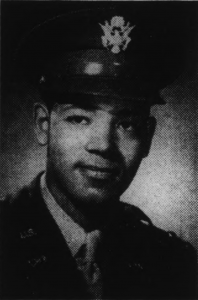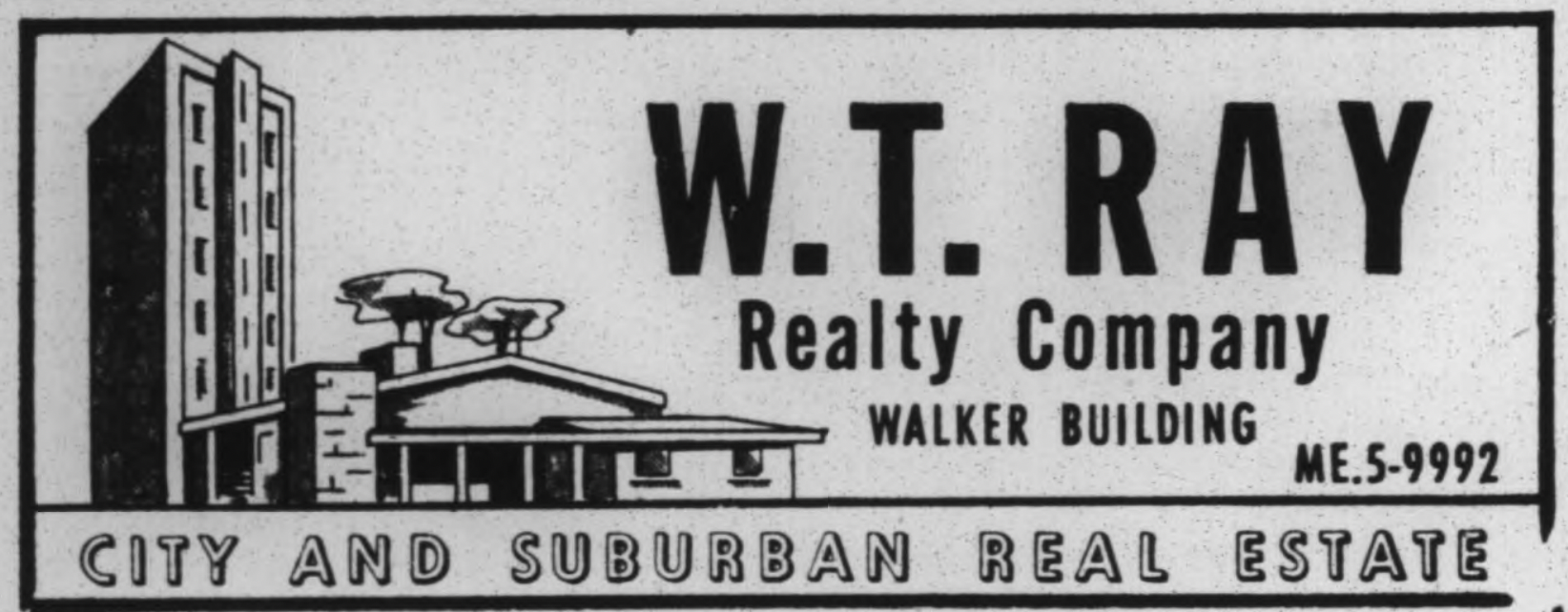
Photo info ...
Credit: Indianapolis RecorderView Source
(Mar. 20, 1916 -Dec. 17, 2010). The first accredited Black real estate agent and the first African American to hold an executive position in Indiana state government, W. T. Ray was born in New Haven, Connecticut. He was the son of William H. and Malinda C. Ray, who were New Jersey natives and lived in Brooklyn, New York, before moving to New Haven, Connecticut. His father tried various occupations, including being a waiter and fireman. In the 1910s, his mother had been a seamstress. By 1930, the family had moved back to New Jersey, living in Caldwell, which is 47 miles west of Manhattan and about 12.5 miles northwest of Newark. Ray’s father worked in Caldwell as an apartment house superintendent.
Following graduation from the Caldwell public schools, Ray attended Western Reserve University (which became Case Western Reserve University when it merged with Case Institute of Technology in 1967) and Oberlin College, both in Ohio, focusing on business administration. There, in 1936, he met Alice Olga Brokenburr, the daughter of prominent African American Indianapolis attorney and the first African American Indiana state legislator . From 1938 to 1939, Ray attended Cleveland College part-time.
By the time World War II broke out, Ray was working for an electrical appliance business in Cleveland. After enlisting in the U.S. Army in September 1941, he attended Officer’s Candidate School at Edgewood Arsenal in Aberdeen, Maryland, before attending the Chemical Warfare School in 1942. Later that year, the army sent him to Fort Huachuca, located in an isolated region of Arizona southeast of Tucson near the Mexican border, as a member of the Chemical Welfare Department of the 93rd Infantry Division.
While the fort had played a key role in the U.S. government’s dealings with the Apaches beginning in 1877, it became the post of the famed Black troopers of the 10th U.S. Cavalry (the “Buffalo Soldiers”) in 1913, and during World War II it was the post of the 92nd as well as the 93rd U.S. African American infantry divisions. In September 1942, before being sent on active duty, Ray married Brokenburr when her father traveled with her to Arizona.
Ray served as a chemical warfare service officer in the South Pacific Theatre in the Northern Solomons, New Guinea, Mortal, and the Philippines. Promoted to captain, he earned a Bronze Star in June 1945 and was honorably discharged.
After the war, Ray settled with his wife in Indianapolis, where he attended Indiana University-Indianapolis for a degree in real estate.
In 1946, he established W. T. Ray Real Estate Company, which he opened at 510 North West Street and operated for the next 35 years. Between 1947 and 1949, Ray was president of the (NAACP) branch for Greater Indianapolis. Under his leadership, Ray formed the Indianapolis NAACP Youth Council, protested higher streetcar fairs that disproportionately affected African Americans, fought race discrimination in opposition to an all-white national bowling competition at the , and worked on a successful jobs campaign in public utilities. Ray also played a role in bringing the federal against the . After serving three terms, he declined renomination in 1950 because of the demands of his growing real estate business. He, however, remained as second vice president and in the years following served in several leadership roles for the organization.

By 1959, Ray’s company had outgrown its offices at 510 North West Street. Those offices became the new home of the NAACP, and W. T. Ray Real Estate moved to the ground floor of the . Ray became the first accredited Black realtor in Indianapolis and a member of the Indianapolis Real Estate Board in 1965. He served as sales agent for the Augusta Way subdivision, west of Grandview Drive between 62nd and 64th streets, and sold the neighborhood builder’s “Suburban” house plan. Through his company, Ray improved residential access for African Americans and other minorities and helped end housing discrimination in the northwest suburbs of Indianapolis.
In 1973, Ray was appointed executive assistant to Governor Otis R. Bowen, which was the highest state government office held by an African American to that time. His responsibilities included managing disbursement of federal resources to local governments, as well as organizing the Department of Community Services and the state Housing Authority. In 1981, Governor Robert D. Orr appointed Ray director of the Indiana Department of Financial Institutions. He served in this position until 1989.

Along with other African American business and civic leaders, Ray established Midwest National Bank. Active in Republican politics, President Gerald Ford appointed him to the National Advisory Council on Economic Opportunity in 1976. Ray also served on the boards of numerous companies and organizations.

Help improve this entry
Contribute information, offer corrections, suggest images.
You can also recommend new entries related to this topic.